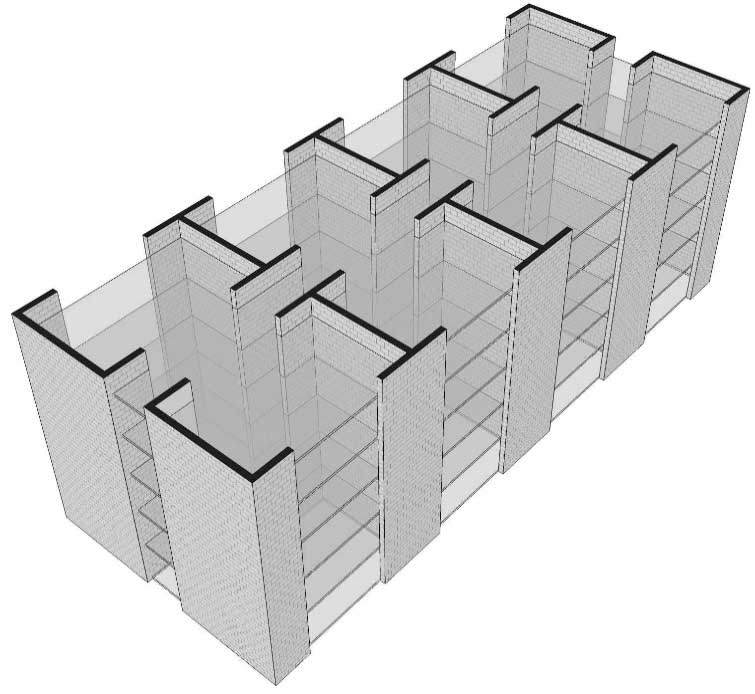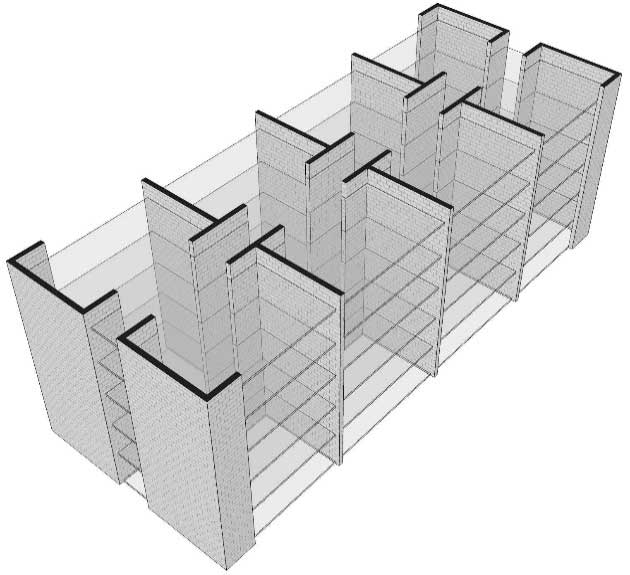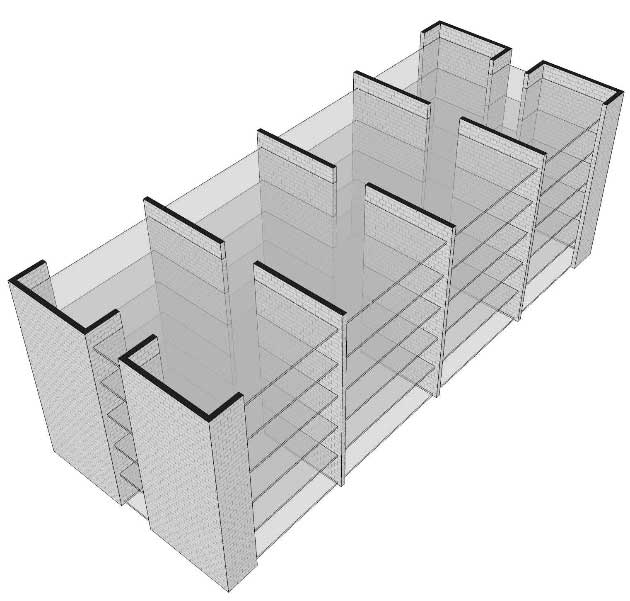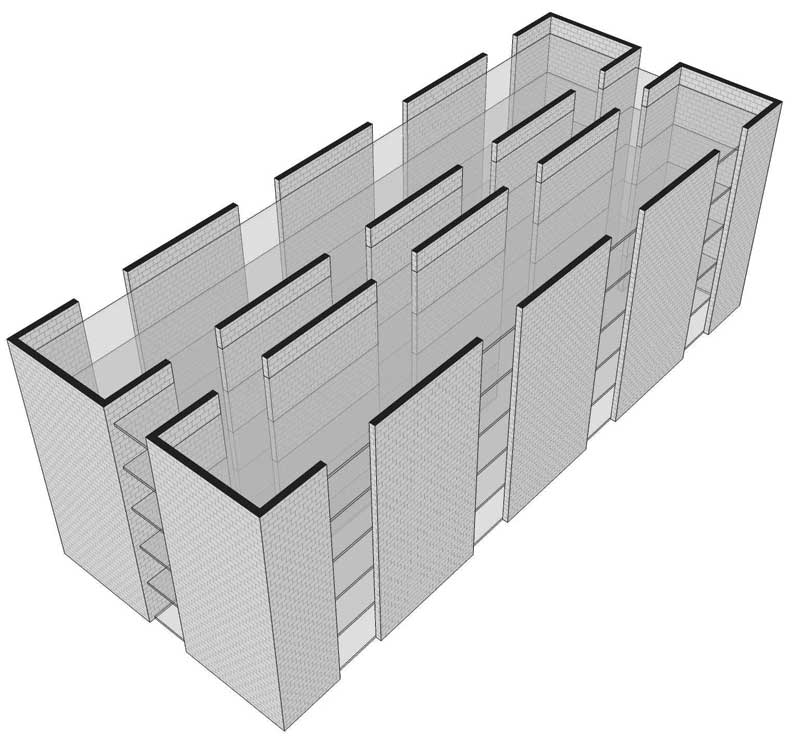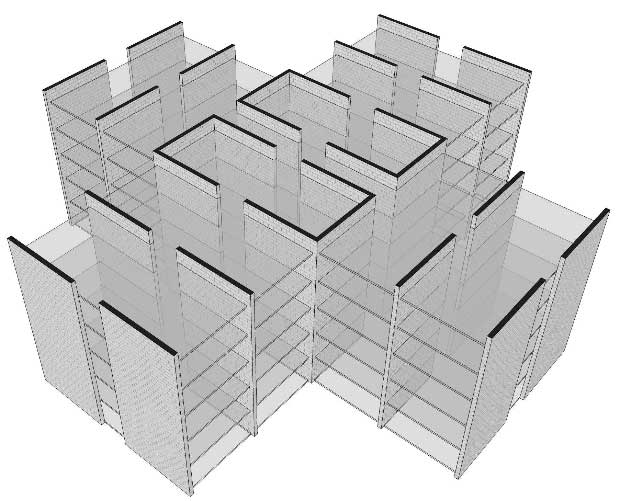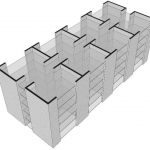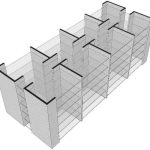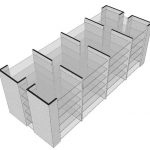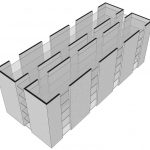What non-engineers need to know about structural masonry
Typical floor plans and layouts
Whole building solutions are what most construction professionals think of when they hear about structural or loadbearing masonry. The common perception is loadbearing, whole building solutions are best suited for mid- and low-rise structures. While masonry is a great solution in these applications, high-rise construction can benefit from partial solutions like infill, shear walls, stairs, and shafts.
Masonry structural solutions also bring the added benefits of security and safety from fire, wind, blast, and impact, as well as natural thermal and sound control. Certain layouts and floor plans work very well with structural masonry whole building solutions. The following floor plans are typical for a hotel, dormitory, multifamily housing, senior living, health care, school, and other structures.
- A simple cross-bearing wall layout is structurally efficient with its symmetrical layout and myriad shear wall options (Figure 1).
- The cross-bearing wall layout depicted in Figure 2 provides more flexibility with the exterior walls, as many are not employed as bearing or shear walls. From the engineer’s perspective, it could be more challenging to distribute the shear loads in Figure 2 than in Figure 1. The corridor walls are still used as shear walls in this option.
- Figure 3 takes it a step further. The layout frees up the corridor walls and uses end walls only for shear. It offers great architectural flexibility, but can be limiting from a structural standpoint.
- Not all layouts have to be variations of a cross-bearing wall plan. Figure 4 is an example of a longitudinal bearing wall plan. Typically, these layouts are employed for shorter buildings and may need added shear walls in taller structures or higher seismic areas.
- Structural layouts do not have to be rectangles; combining options produces T, X, H, I, and L-shaped structures, just to name a few. Masonry also works well for curves. Figure 5 shows a central core option with elevators and stairwells, which serve well as shear and loadbearing walls.
When is structural masonry the right solution?
One must keep the benefits of structural masonry in mind when searching for the right solution to a building need. As a system, structural masonry provides:
- fire safety;
- sound control;
- impact-, blast-, and wind-resistance;
- thermal mass benefits;
- a single-source building trade solution;
- fast delivery;
- simple jobsite modifications; and
- the ability to act as both structure and finish.
Structural masonry is wall bearing, not a beam and column system like structural steel frames. In many situations, this gives the advantage of lighter foundations, which can be designed and laid faster. It also offers continuous anchorage and construction sequencing benefits, like starting in multiple locations.

